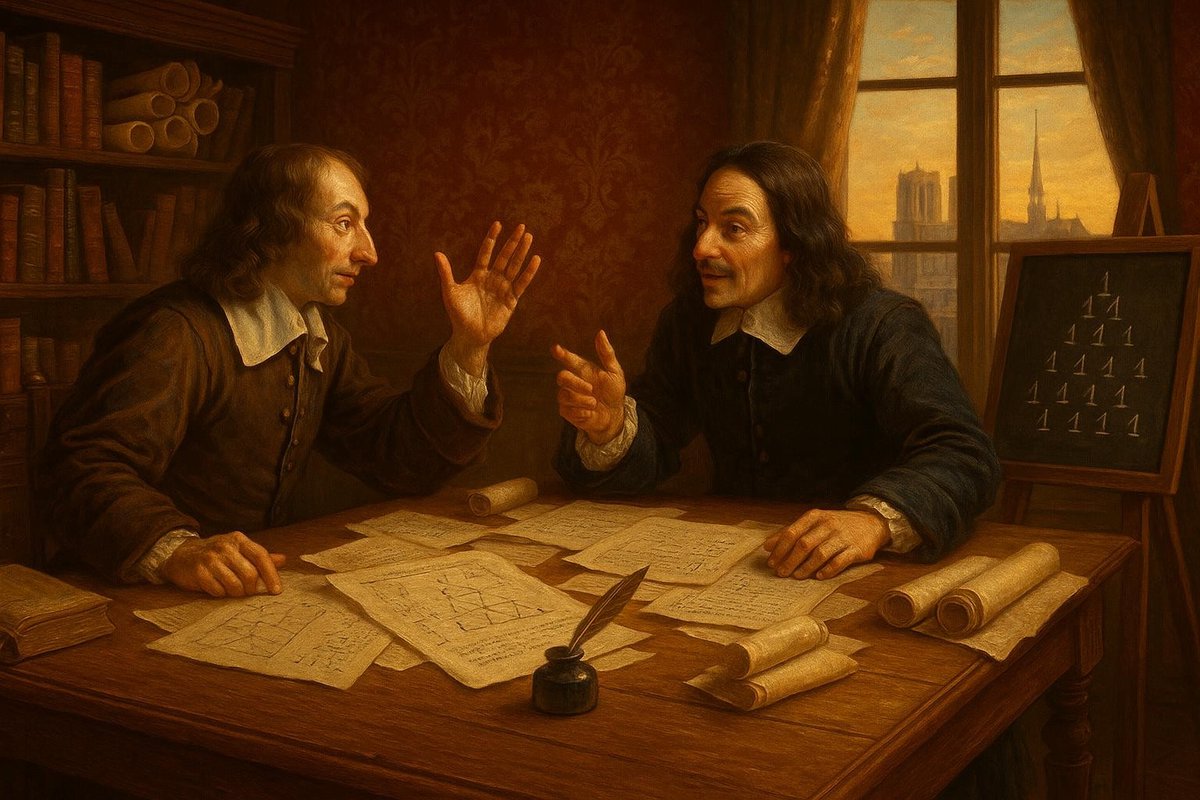
The Unexpected Simplicity Behind A Mathematical Marvel
Imagine sitting in a 17th-century Parisian salon, where the air is thick with the aroma of roasted coffee. Intellectuals chatter excitedly about a peculiar number pattern that seems to unlock the secrets of the universe. This is the setting where a deceptively simple question about numbers sparked the creation of Pascal’s Triangle. Many believe that such brilliant ideas arise from complex problems, but the origin of Pascal’s Triangle tells a different story. It started with a simple puzzle about counting paths and combinations, leading to a structure that mathematicians and scientists still marvel at today.
The Origin: A Simple Puzzle with Profound Implications
Before Blaise Pascal’s name became synonymous with this triangular array, the journey of this mathematical concept was deeply rooted in ancient civilizations. Centuries before Pascal, mathematicians in China and India toyed with similar patterns.
- The earliest known reference is seen in the works of Persian mathematician Al-Karaji, who explored binomial expansions around 1000 AD.
- Later, in 13th-century China, mathematician Yang Hui popularized it, leading to the triangle sometimes being called Yang Hui’s Triangle in Chinese texts.
These early mathematicians were driven by the intriguing question of how to efficiently calculate combinations. The triangle emerged as an elegant solution, providing a clear visual representation of coefficients in binomial expansions. Despite its ancient roots, it was the simplicity of counting combinations that embedded this pattern in mathematical history, demonstrating that sometimes the most profound discoveries arise from straightforward questions.
Key Figures: Blaise Pascal and His Contemporaries
While Pascal’s Triangle bears his name, Blaise Pascal was not the sole contributor to its development. However, his work in the 17th century profoundly impacted its formalization and study in Europe.
- Blaise Pascal, a child prodigy, grew into a renowned mathematician and philosopher, who, in 1653, published “Traité du triangle arithmétique.”
- Pascal’s work was influenced by French mathematician Pierre de Fermat, with whom he exchanged ideas on probability theory.
Pascal’s formalization of the triangle’s properties and its application in probability theory marked a turning point. With a focus on calculating probabilities in gambling scenarios, Pascal and Fermat’s correspondence laid the groundwork for the field of combinatorics. Interestingly, this collaboration extended the triangle’s utility beyond mere arithmetic into the realms of probability and beyond, showcasing the interconnectedness of mathematical ideas.
Turning Point: From Curiosity to Cornerstone
The turning point for Pascal’s Triangle came with the rise of probability theory and its application in real-world problems. Mathematicians began to see its potential beyond theoretical pursuits.
- The Triangle’s role in calculating probabilities became invaluable in burgeoning fields like statistics and actuarial science.
- In the 18th century, it became a tool for exploring binomial expansions, which in turn influenced calculus and algebra.
No longer just a curiosity, the Triangle evolved into a cornerstone of mathematical education. Its simple structure—each number being the sum of the two directly above it—provided clarity and insight into complex problems. This transformation from a simple counting method to a vital mathematical tool highlights the Triangle’s versatility and enduring value.
Impact on the World: A Legacy of Innovation
The legacy of Pascal’s Triangle extends far beyond its initial intellectual puzzle. Its impact is felt in numerous scientific and mathematical disciplines today.
- In computer science, algorithms based on its properties are used for data organization and error detection.
- The Triangle’s principles underpin many statistical models used in economics, genetics, and social sciences.
No wonder Pascal’s Triangle continues to captivate students and scholars alike, illustrating the interconnectedness of mathematical concepts with real-world applications. Its simple beginnings serve as a reminder that great discoveries often emerge from the most fundamental questions, fueling ongoing exploration and innovation.
As we reflect on the ongoing legacy of Pascal’s Triangle, it’s clear that its influence is deeply woven into the fabric of modern mathematics and science. From education to innovation, this deceptively simple pattern continues to inspire and inform generations of thinkers, proving that the simplest questions can lead to the most profound insights.
Fuel Someone Else’s Curiosity
Have you ever encountered a simple question that led you to profound insights? Share this article with friends and spark a conversation about the beauty of mathematics and the power of curiosity. Together, we can continue to explore the wonders of the world around us, one question at a time.

Leave a Reply